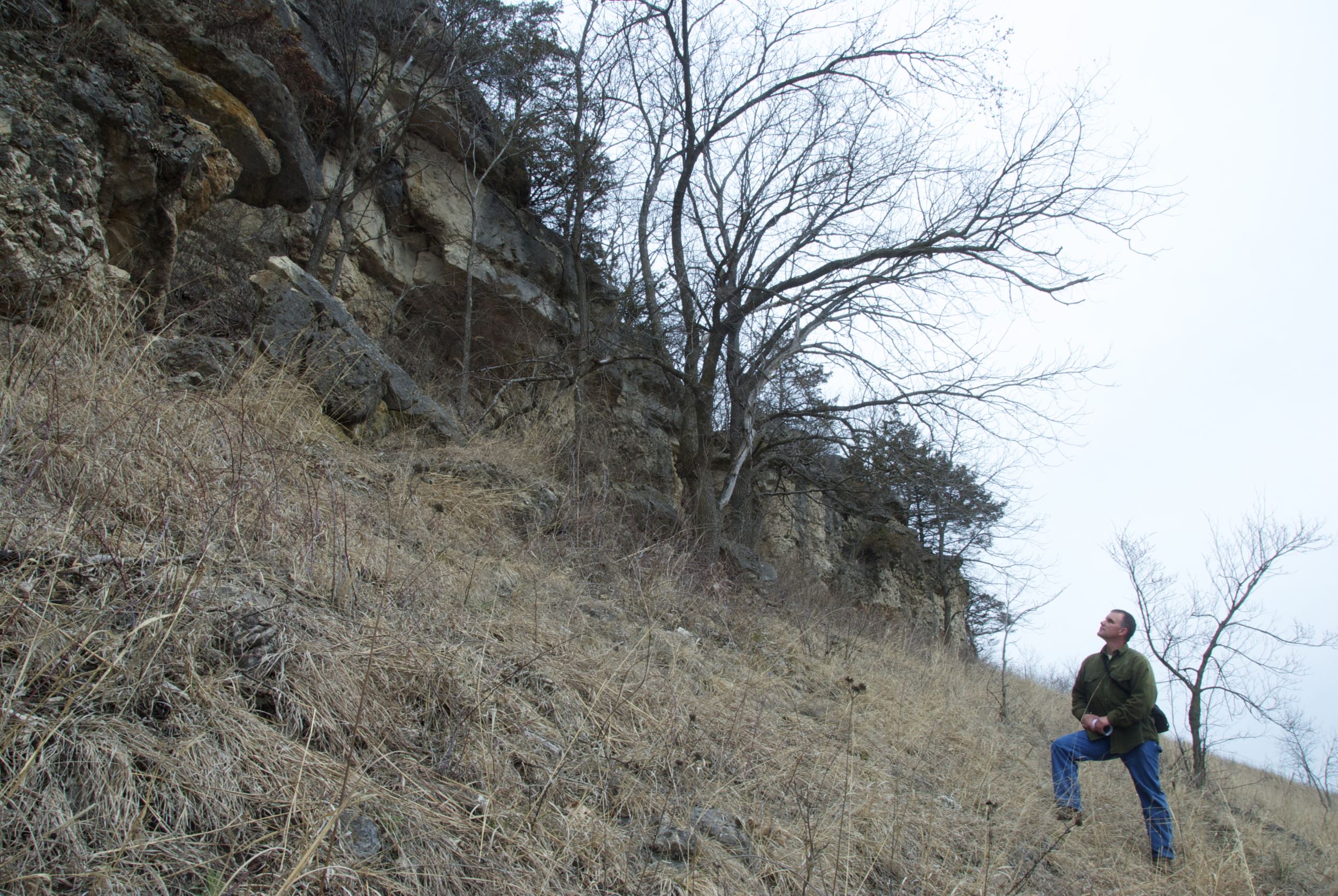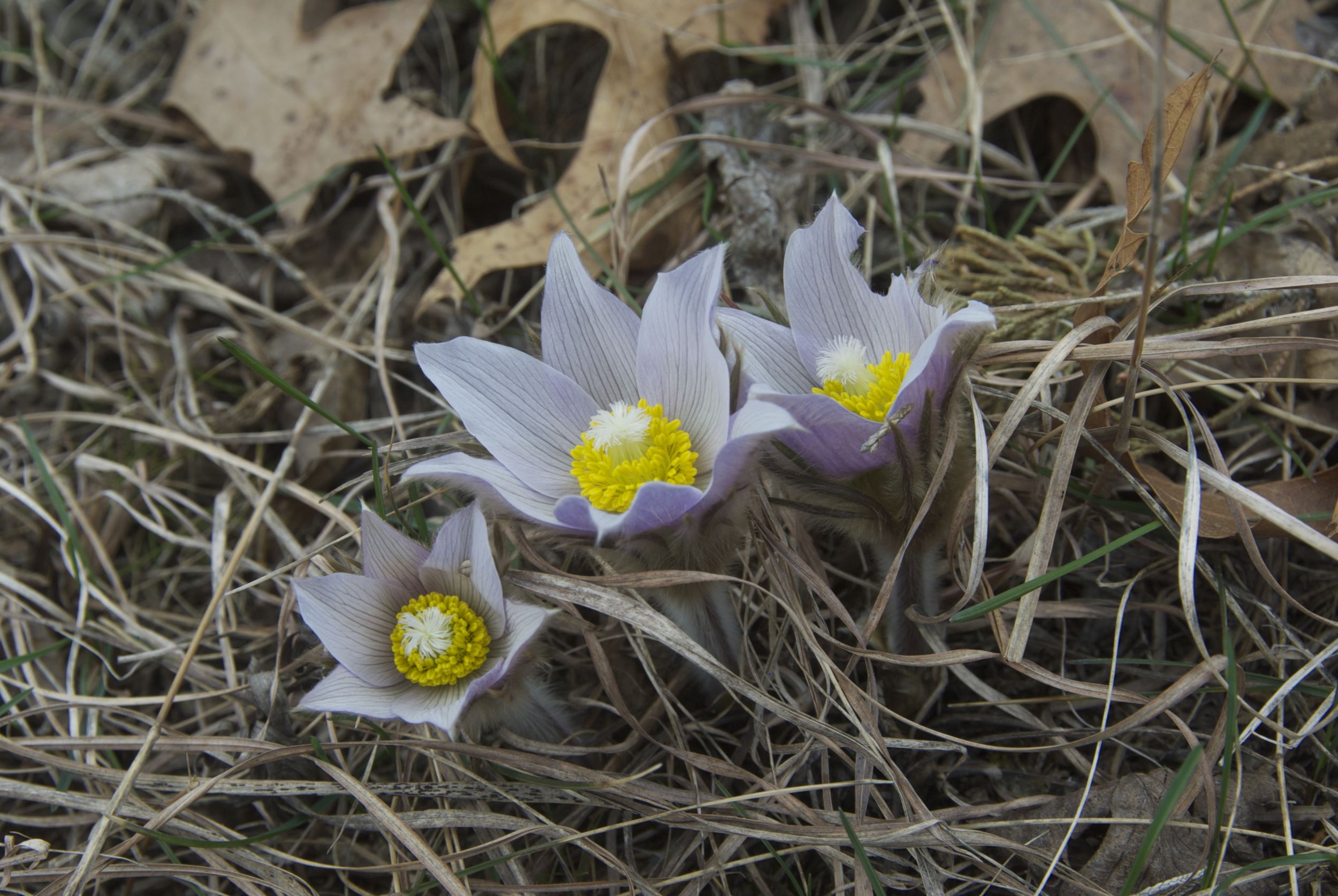Rugged, beautiful land protected by working together
Posted on July 26, 2016 in Blog

Brian Fankhauser, INHF blufflands director, hikes along one of the rough limestone ridges that tower above the Iverson land.
A textbook example of partnerships among private landowners, conservation organizations and government agencies has protected an UN-ordinary natural area in an extraordinary corner of Iowa.
More than 3,000 acres of wild lands — centered on the Iowa Department of Natural Resources’ 680-acre Iverson Bottoms Wildlife Area — sprawl across the meandering Upper Iowa River Valley in Allamakee and Winneshiek counties. The complex represents a decades-long effort by Iowa Natural Heritage Foundation, the Iowa DNR and conservation-minded landowners.
Goat prairies, limestone ridges, mature woodlands and river bottoms contain diverse wildlife and plant communities. Indian mounds denote earlier peoples’ connections to the region. Canoeists, hunters, bird watchers and botanists find areas as wilderness-like as anything in Iowa.
Iowa DNR wildlife biologist Terry Haindfield calls it “the best country in the whole wide world.”
“The core is something special for wildlife,” he said. Expanses of forest, with farm fields, hill prairies and the Upper Iowa River corridor shelter deer, turkeys, ruffed grouse and songbirds. Wintering deer seek the secluded blufflands. Reclusive bald and golden eagles, timber rattlesnakes, river otters and bobcats find refuge in the rugged Upper Iowa River Valley.
A mix of land stewardship techniques practiced
The unique area requires complex management, Haindfield said. The Iowa DNR stewardship plan protects large woodlands for forest interior bird species, while occasionally using clear-cuts to create habitat for grouse and songbirds that need more brush.
Timely harvest of mature oak stands, before maple and basswood take hold, will ensure future mast-rich oak-hickory forests for squirrels, deer and turkeys. Controlled fire on prairie remnants will stimulate grasses and forbs that have been suppressed by encroaching cedar trees, Haindfield said. Land managers also must maintain pleasing viewsheds, avoid damage to steep slopes and protect Native American mounds and other archaeological resources.
Multiple partners worked together over three decades
The Iverson Bottoms project required many partners. The state acquired the first 338 acres in 1981, using funds from federal excise taxes on hunting and fishing gear, along with Iowa “Open Spaces” funds.
More recently, INHF and Iowa DNR cooperated on four additions that doubled the size of the original Iverson Bottoms area. Using donations from supporters, INHF negotiated land deals that might have been difficult for a state agency constrained by timetables and budgets.
In 2005, INHF acquired 22 acres at Iverson Bottoms by trading the owner an 18-acre tract in another part of the Allamakee County. The trading partner donated conservation easements on that 18 acres and another 58 acres.
Iowa’s Resources Enhancement and Protection (REAP) funds cost-shared two other parcels that INHF purchased in 2011 and 2013.
Iowa DNR also used money from the Protected Water Area (PWA) allocation of REAP, said Todd Bishop, special projects coordinator for the Iowa DNR’s wildlife bureau. He and Nate Hoogeveen, director of river programs for the Iowa DNR, put that money toward buying the 212-acre tract that INHF purchased in 2012.

Typical to northeast Iowa woodlands and goat prairies, pasque flowers are some of the earliest flowers to bloom in the spring.
Culturally significant lands
Pat Ryan, son of the late Forrest Ryan, worked with INHF to protect the site, which includes 1.5 miles of Upper Iowa riverfront and half a mile of Pine Creek. His father was passionate about preserving the area — especially the Indian mounds on a bench above the floodplain, Ryan said.
That mound group may be the most prominent Native American site in the region — but certainly not the only one, said Colin Betts, professor of anthropology at Luther College in Decorah.
The Upper Iowa Valley has “a really rich archaeological legacy,” Betts said. “There is no doubt that it represented an important location for people going back thousands of years.”
Other protected land in the river bottoms area includes 1,224-acre Heritage Valley, which INHF purchased from the estate of Forrest Ryan in 2007. Although not contiguous to Iverson Bottoms, Heritage Valley is just upstream along the Upper Iowa River. The Iowa DNR’ s 694-acre Pine Creek Wildlife Area connects with Heritage Valley, and the 495-acre Canoe Creek Wildlife Area is only a mile or two farther upstream.
With unusual wildlife and plant communities, scenic vistas, high-quality streams, archeological treasures and corridors connecting public and private conservation areas, the Iverson Bottoms area —and the surrounding Upper Iowa blufflands — showcase Iowa’s natural and cultural heritage at its best.